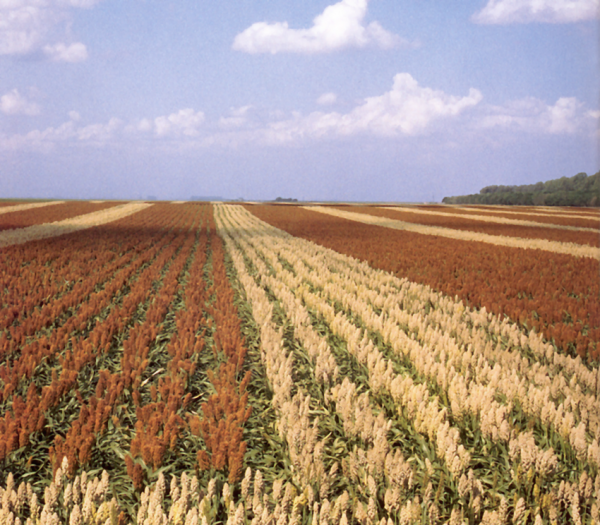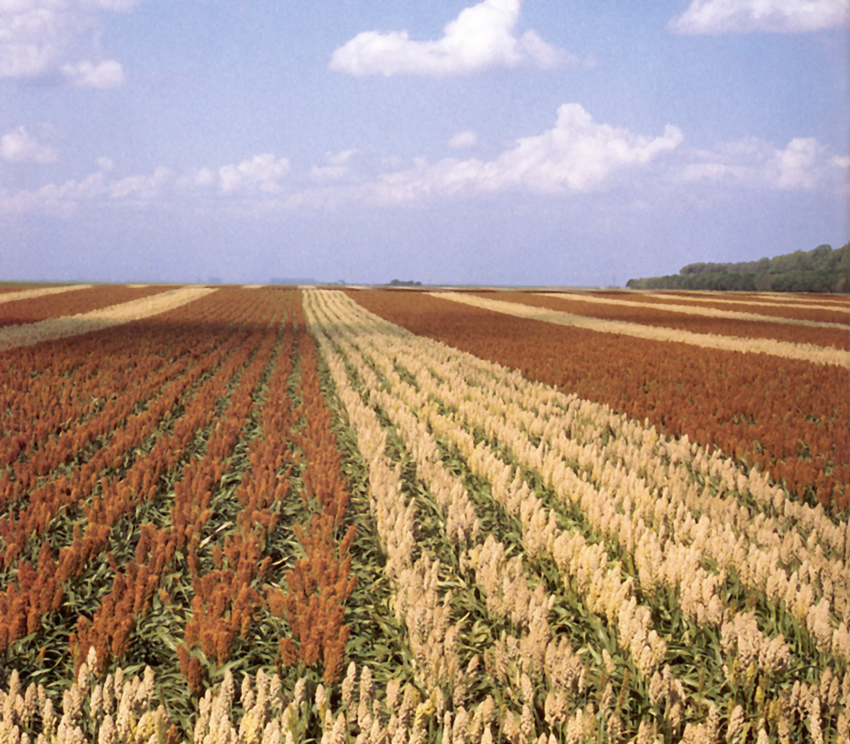


In recent years, sorghum has begun to emerge as an attractive alternative to corn–here are some of the factors driving that change.
Over the last few years, grain sorghum, or milo as it is known in some parts of the world, has received increasing attention in U.S. agricultural circles. Once relegated to the category of ‘other feed grains’ in USDA parlance, both for data and policy purposes, sorghum is beginning to emerge from the massive shadow cast by U.S. production and use of corn.
Sorghum was first grown as a crop in northern Africa, dating back to prehistoric times, and remains a staple food crop for hundreds of millions of people around the world. The first written record of sorghum grown in this country came from Benjamin Franklin, who wrote about its usefulness in making brooms in 1757.
U.S. sorghum planted area peaked in 1971 at 20.5 million acres and fell steadily over the last four decades to an all-time low of 5.4 million acres in 2010, as many farmers shifted to corn to take advantage of higher prices, fueled particularly in recent years by the ethanol boom. Over this period, grain sorghum had been sold in the U.S. and world market primarily as an alternative to corn as a feed grain for livestock consumption. Sorghum was priced at its energy value relative to corn–that ratio varies depending on growing conditions for both crops, but 95 percent was the widely accepted rule of thumb. This relative energy value was also used to govern the program price relationship between corn and sorghum as reflected in U.S. commodity support programs through the 2008 farm bill.
According to the March 31, 2015 USDA Prospective Plantings report, U.S. grain sorghum planted area is projected to be 7.9 million acres in 2015/16, an 11 percent increase over the previous year and a 47 percent increase over its lowest level in 2010. Why is this recent growth in sorghum acres occurring?
There appear to be four factors contributing to this growth, two on the demand side and two on the supply side. The biggest boost on the demand side comes through the export market–U.S. sorghum exports increased more than 400 percent between 2011-2014. The main source of that increase is China, which rose from no U.S. sorghum imports in 2012 to more than 6 million tons in 2014. This growth is occurring largely at the expense of U.S. corn, because the government of China has moved very slowly to approve new types of biotech corn grown by U.S. farmers. As a result, many China importers have shifted to buying sorghum instead, to avoid having to deal with the complicating factor of GMO varieties in the supply chain.
A smaller source of new demand, but with potential future gains, stems from recent research that indicates that sorghum-based food products are safe for people with gluten allergies to eat, and cheaper to utilize than the grains now used in other non-gluten products, such as quinoa. Since the size of the market for gluten-free products in the United States was estimated at $973 million in 2014, with 19 percent annual growth estimated through 2019, food use of sorghum could expand considerably.
On the supply side, the decision to establish the reference price for sorghum under the new Price Loss Coverage (PLC) program at a seven percent premium to corn in the 2014 farm bill has caused some farmers to take a second look at sorghum as a crop they might want to grow, as this crop now has more robust safety net protection.
However, the main factor driving farmers’ planting decisions is that sorghum cultivation requires less annual rainfall than raising corn. Sorghum can be grown successfully in regions that average between 20 and 25 inches of rain per year, while corn generally needs 25 to 40 inches of rainfall annually to prosper. Sorghum fields are appearing more and more frequently in Southern Plains and Mountain states such as Texas, Oklahoma, Kansas, and Colorado, where recent droughts have made sorghum a less risky option than corn for farmers without access to water for irrigation.
If the government of China ever regularizes its system for approving imports of crops grown through biotechnology, the recent shift toward sorghum exports would likely slow. However, the other factors driving the sorghum surge seem likely to have greater staying power, especially as farmers seek to cope within their own operations with the implications of greater precipitation variability expected as an effect of climate change.

